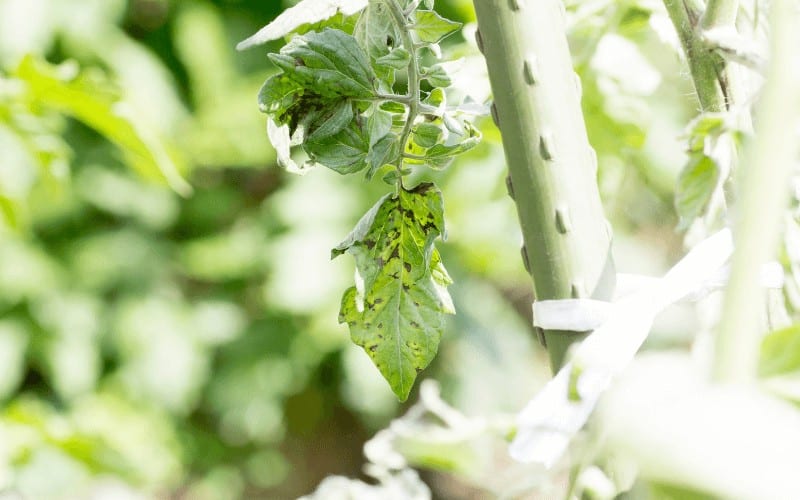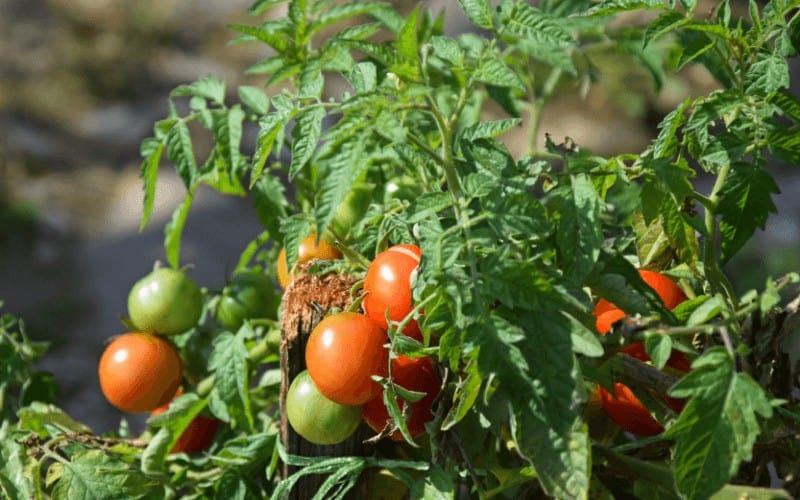But why is tomato plant wilting after transplant? This is a disturbing question we're going to answer in today's blog post.
Extensively, tomato plants are popular garden fruits that are grown by most gardeners in many places in the world. Over millions of people can account for its benefits and rewarding efforts. This beautiful plant is grown mostly outdoors under a beneficial atmosphere.
The significant benefits of this plant would include a good source of fiber, antioxidant lycopene, which is healthy beneficial, it helps to reduce heart disease and cancer. Tomatoes are a great source of Vitamin C, potassium, folate and vitamin k.
These antioxidants make eating tomatoes important, tomatoes help reduce acnes and give the skin a youthful glow, removing wrinkles and retaining moisture.
Irrespective of these benefits, it could be very disturbing if this beneficial plant of yours shows wilting signs after transplanting.
Table of Contents
Signs of a Wilting Tomato Plant
Your tomato plant would go through some changes to show they are wilting, hopefully this leads to why it is wilting after transplant.
- Weak leaves, brown leaves, and weak stems show it is about to undergo wilting.
- Stunted growth; once the tomato plant is not strong and growing inadequately.
- See if they are discolored; other than brown, they could change to yellow or purple to show something is wrong with the plant.
- The appearance of white mold on the soil around the base of the plant is another sign that the plant would will in no distant time.
All this and more are signs, the signs your tomato plant would depict on the verge of wilting, if not wilting already.
Note: A healthy tomato plant would not wilt especially when they are cared for, however, without precautionary measure your tomato plant would surprisingly wilt overnight when you least expect it most definitely after transplant.
Why is tomato plant wilting after transplant? Let's now answer this question so you will know what's wrong with your tomato plants:
Read Also: How To Protect Tomato Plants From Bugs
Why is Tomato Plant Wilting After Transplant?

Below are a few reasons why a transplanted tomato plant might start wilting:
1. Bad soil composure
Your tomato plant perhaps has been in the best condition, but changed after transplanting, the reason could be poor soils especially when planted on heavy clay.
2. Underwatering and Overwatering
We could trust your tomato plant to grow well, but letting it grow on its own is entirely a bad idea, not watering the plant enough is as good as ignoring it as this brings about wilting after transplant.
Overwatering, on the other hand, drowns the roots and they cannot absorb water from the soil so the plant wilts and go as far as contracting diseases. Therefore, you want to ensure you give your tomato plants the right amount of water.
3. Exposure to direct sunlight
Tomatoes would wilt if exposed to direct contact with the sun.
Note: Tomato plant wilt during the day in direct sunlight and recover magically in the evening, but if it continues to see the following reason.
4. Potted wilt virus
Your plant wilting could be because of a virus called spotted wilt, the leaves would turn purple and brown having spots in response to contracting this virus.
5. Fungal disease
Fungal disease, which is caused by either verticillium wilt fungus or Fusarium wilt fungus. The tomato plant affected will wilt and die rapidly as the fungus clogs round the vascular system.
6. Allelopathic plants
Your tomato plant would be affected greatly if transplanted to allelopathic plants. Remember that all the plants would not be as accommodating as others.
Allelopathic plants release chemicals (allelochemical) that are toxic to the affected plants, and if your tomato plant is found around them, the result will not be appealing. Walnut, for example, releases juglone, and it is harmful to the tomato plant too.
But where can these chemicals be found?
You can find these chemicals in leaves, flowers, roots, fruits, and around the soil. Some of the allelopathic plants would include; sunflower plants and walnut trees.
These are great plants, but are just dangerous to tomato plants, they can also release it through natural decomposition.
All these causes are threatening and are super dangerous to an extent, you might wonder the chances you have at saving the plant in cases of high exposure to danger.
Will Wilted Tomato Plants Recover?

Yes, wilted tomato plants might recover if taken care of.
But the truth is, your tomato plant surviving wilting depends on the condition it is.
If your tomato plant is wilting because of bad soil composure, exposure to direct light, overwatering and underwatering, then the chances of saving them are relatively high.
So your tomato plant can recover to an extent depending on the condition.
How To Save a Wilted Tomato Plant
Now that you already know why your tomato plant is wilting from transplant, let's now look at how you can save your wilting tomato plant:
- Water your plant well, allow the ground to dry a few inches before waiting.
- Fertilize your plants well.
- Choose good soil for your tomato plant.
- Check out allelopathic plants around before transplanting.
- As your plant might not be saved because of viruses and fungal disease, you can do well by destroying the affected area lest it spreads.
Recommended Readings:
- Why Do My Tomato Plants Not Produce Fruit?
- How Much Sunlight Does A Tomato Plant Need?
- Why Does My Tomato Plant Have Flowers But No Fruit?
- How Many Tomatoes Fit In a 5 Gallon Bucket?
- Should I Cut Dead Leaves Off My Tomato Plant?
- How To Get Rid Of Tomato Hornworms
Conclusion
Having realized why tomato plants might be wilting after transplant, we trust you to enjoy a hitch free planting!
It is your duty to take proper care of your plants and ensure they experience healthy growth.




